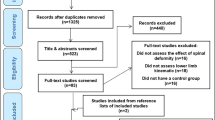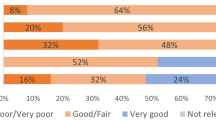Abstract
Study design:
This case study outlines an individual with a T4 complete level injury with Ashworth scale grade 4 spasticity of the lower extremities.
Objective:
To discuss a treatment option for this individual with spinal cord injury (SCI) who had a variety of functional impairments, disabilities, and medical complications based on his level of injury.
Setting:
The department of physical medicine and rehabilitation at Kaiser Permanente in San Diego, California.
Methods:
The patient's lower extremity spasticity contributed to pressure ulcers of his hips and feet as well as comfort and functional issues with his instrumental activities of daily living (ADLs). After failing medical therapies to control spasticity, and much discussion, bilateral above the knee amputations were performed.
Results:
The patient had resolution of his SCI medical complications and a marked improvement in his quality of life.
Conclusion:
This case study discusses a treatment option for a SCI-complete patient whose lower extremities had become detrimental to his function and general well being.
Similar content being viewed by others
Log in or create a free account to read this content
Gain free access to this article, as well as selected content from this journal and more on nature.com
or
References
National Spinal Cord Injury Statistical Center. Spinal Cord Injury Information network. University of Alabama at Birmingham's Department of Rehabilitation Medicine. 2007. http://main.uab.edu/show.asp?durki=10766.
Westgren N, Levi R . Quality of life and traumatic spinal cord injury. Arch Phys Med Rehabil 1998; 79: 1433–1439.
Kreuter M, Sullivan M, Dahllof A, Siosteen A . Partner relationships, functioning, mood and global quality of life in persons with spinal cord injury and traumatic brain injury. Spinal Cord 1998; 36: 252–261.
DeLisa J, Gans B . Rehabilitation of Spinal Cord Injury. Physical Medicine and Rehabilitation Principles and Practice, 4th edn. Lippincott Williams and Wilkins: Philadelphia, PA, USA, 2005.
Camilla S . Spasticity after traumatic spinal cord injury: nature, severity, and location. Arch Phys Med Rehabil 1999; 80: 1548–1556.
Garber SL, Rintala DH, Hart KA, Fuhrer MJ . Pressure ulcer risk in spinal cord injury: predictors of ulcer status over 3 years. Arch Phys Med Rehabil 2000; 81: 465–471.
Fuhrer MJ, Garber SL, Rintala DH, Clearman R, Hart KA . Pressure ulcers in community-resident persons with spinal cord injury: prevalence and risk factors. Arch Phys Med Rehabil 1993; 74: 1172–1177.
Clark FA, Jackson JM . Data-based models of how pressure ulcers develop in daily-living contexts of adults with spinal cord injury. Arch Phys Med Rehabil 2006; 87: 1516–1525.
Acknowledgements
I thank Linda Jaffe, MD, for draft review and Linda Masliah at our health science library.
Author information
Authors and Affiliations
Corresponding author
Rights and permissions
About this article
Cite this article
Jaffe, M. Elective bilateral above the knee amputation in T4-complete spinal cord injury: a case report. Spinal Cord 46, 585–587 (2008). https://doi.org/10.1038/sc.2008.58
Received:
Accepted:
Published:
Issue date:
DOI: https://doi.org/10.1038/sc.2008.58



